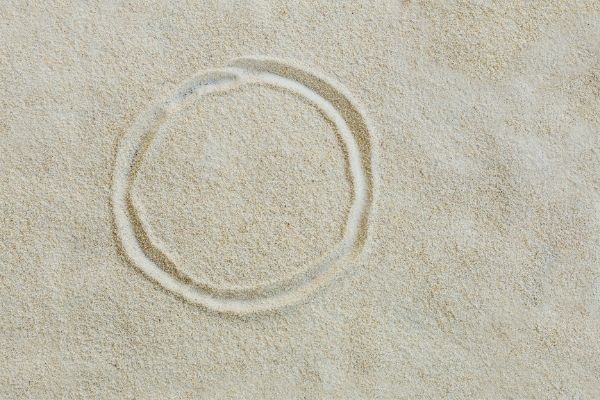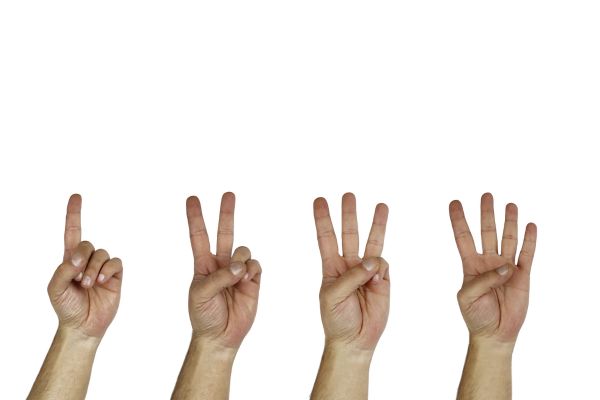Our current systems are reaching their limits. Waste is piling up, resources are running out, and every corner of the globe is suffering from the impacts of overuse. Our planet’s in trouble, and we need to make a change. We need to move to a circular economy.
You may have heard the term circular economy. Maybe you are wondering what it is the circular economy. How is it different from the way we currently do things? Below we will provide you with the basics, giving you a good understanding of what a circular economy is and how it will make a difference to our future.
A circular economy is a model that is regenerating like the natural systems around us. A circular economy is not just a system that reduces waste and increases recycling. It is a more natural approach to the economy that can benefit business, society, and the environment. It can improve the environment and help heal our planet.
What Does Our Current Model Look Like?
Back in the last century, the industrial revolution changed society for the better. It brought improvements in the standard of living, health, and overall quality of life for many people worldwide. With these great benefits also came consumerism. In a short time, we were able to get products that we could have only dreamed of. Products that made our lives easier.
We did not stop at convenience, however. Since the industrial revolution, we have generated more and more products, taking more and more raw materials from the earth and processing them into the things that fill our lives. Mobile phones, washing machines, laptops, couches, toys, curtains, books, glassware, every one of these items uses raw materials and energy to produce.
Although clearly there were some benefits to this growth, most of these products were made, used, and thrown away. This take-make-waste system is what we refer to as a linear economy.
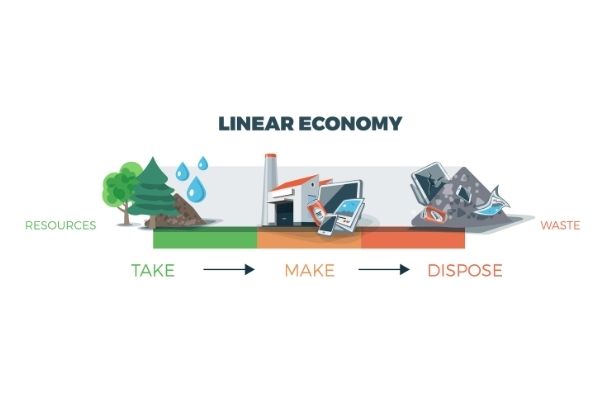
A linear economy is where energy and resources are input, transformed into products, and then discarded once they are no longer needed. The diagram above demonstrates how this works.
There are many limitations of a linear economy. The model relies on unlimited supplies of raw materials for input, something our planet does not have. There is also a significant amount of energy and water required to collect the resources, process them, and make the products. At the other end, the amount of waste created by the linear economy is a significant problem. It is part of the reason why our recycling and waste handling services are struggling so much.
We need a new way, and that new way is a circular economy.
Disadvantages Of A Linear Economy?
The most significant disadvantage of the linear economy is the take-make-waste approach. The concept is to take materials, use energy and water to make something useful, and then toss all those materials into landfills at the end of their useful life.
It seems ludicrous when you consider it that way.
Production of goods is at the expense of the environment.
“Excessive pressure on these ecosystems jeopardizes the provision of essential ecosystem services, such as water, air, and soil cleaning”
Michelini, Moraes et al., 2017)
Extraction of Resources
The collection of raw materials from the earth’s surface takes a lot of energy and water. These extraction processes lead to the destruction of natural areas by removing forests, disruption to river systems, or the removal of large amounts of soil and rock, changing the landscape. It can also create a great deal of pollution, such as carbon emissions or the release of other toxic substances.
Wasted Efforts
The process of designing a product is involved. It starts with generating a concept, screening the idea, making a prototype, testing, product development, manufacturing, marketing, transportation, sales, and finally, it reached retail and then the customer.
All this and then after a short time, we can so easily discard the item.
Throwaway mentality
It appears to us as consumers that there is a never-ending supply of goods. Unfortunately, the majority of which end up as waste. We are grappling with the throw-away mindset created by the linear model. It is deeply ingrained in our society and cultures.
The linear economy has contributed to a throw-away society where objects have a low value, and throwing them away comes naturally. There is a great deal of work to be done to switch the entire world, from western economies to growing economies, out of this way of thinking.

Pollution
This throw-away mentality is what leads to pollution. The low value placed on the resources in many objects, particularly single-use plastics, can lead to them being disposed of in the environment. A great example of this is the pollution we see in the ocean today.
Pollution also occurs through every phase of the linear economy model. From the extraction and use of resources through the manufacturing phase and then the pollution that results from this waste. When products reach the end of their useful life, they are discarded. They fill up landfills, release toxic chemicals, pollute the natural environment, and can stay around for centuries.
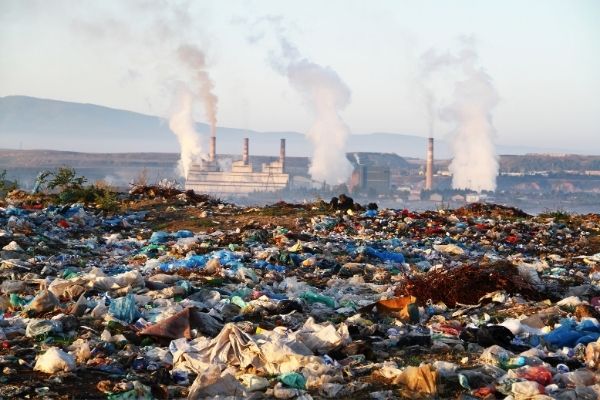
Retrofitting recycling
The design of products in a linear model does consider what will happen at the end of their life. It’s a take-make-waste model where things get tossed away when no longer useful. What happens to them after that is not taken into consideration.
This design process creates many of the issues we see with recycling today. Products were never designed to be recycled, so we must retrofit systems to recycle them.
There are other issues with this design process, like planned obsolescence or the decreasing life of products. While we can blame the designers and companies to some degree, consumers’ ever-increasing demands are to have the next best thing.
What is the circular economy?
The Ellen Macarthur Foundation defines the circular economy as:
A circular economy is based on the principles of designing out waste and pollution, keeping products and materials in use, and regenerating natural systems.
Ellen Macarthur Foundation
A circular economy is designed to mimic the natural restorative and regenerative systems of our planet. In nature, there is no waste; everything is food for something else. In a circular economy, the elements, whether raw materials or products, work their way around closed loops remaining in use as long as possible.

Here is a link to a fantastic video explaining the circular economy put together by the Ellen Macarthur Foundation.
Traditionally we design products to be used and do not consider what will happen to them at the end of their life. A circular economy model considers the entire lifecycle of an object and designs out the waste and pollution from the start.
The three principles of the circular economy are:
- Design out waste and pollution
- Keep products and materials in use
- Regenerate natural systems
In this model, products are designed to be repaired or recycled into new products. There is no planned obsolescence. Quite the opposite, items are intended to last. The design considers not just the materials but also how they are put together so they may be pulled apart easily for repairing or reprocessing. This reduces the waste produced and also decreases our reliance on raw materials.
A circular economy is not just a system that reduces waste and increases recycling. It is a more natural approach to the economy that can benefit business, society, and the environment. It can improve the environment by using less destructive processes like the use of non-renewables or returning nutrients to the soil.
What are the Benefits of the circular economy?
Less Waste
One of the most significant benefits of a circular economy is reducing the amount of waste we create. The take-make-waste model, where raw materials are turned into products used and then discarded, creates enormous amounts of waste. A circular model reduces waste by keeping the materials in circulation. Items are designed to be reused or recycled.
Less pollution
Another major benefit of the circular economy is pollution reduction. From lowering greenhouse gas emissions to using less water or keeping the air cleaner, the regenerative systems of a circular economy reduce our impact on the planet.
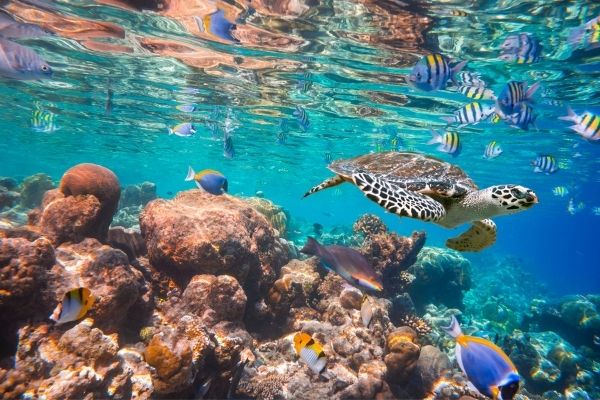
Resources saved
Circular economy principles, such as reusing materials by keeping them in use and designing objects to last, help reduce the need for resources.
Less environmental damage
The environmental damage caused by resource extraction can be significant. We are detached from this because all we see is the end product. We do not see the damage done by extracting and processing all of the raw materials used to make the products we buy. By reducing our reliance on raw materials, circular economy principles can mitigate environmental damage.
Employment growth
The creation of new and innovative businesses leads to the creation of job opportunities. The World Economic Forum estimates that the cost benefits of a circular economy benefits could reach trillions. The restorative and regenerative nature of the circular system leads to companies valuing materials more highly. By working together, companies can positively impact their bottom line, create jobs, and work more closely with communities.
How can you help?
Continue to learn about the circular economy
If you would like to learn more about the circular economy, I recommend heading over to the Ellen Macarthur Foundation’s website. They run many free courses and have self-learning articles and videos available.
Be curious
Stop for a minute and take a look at the objects you own. Appreciate the effort that has gone into producing them, the resources that were used, the energy expended. Question what they are made of, how they were made, and how what impacts might have resulted from their creation. Think about where those materials came from and the effort and damage created when extracting and processing them.
Every item you own has taken energy and resources to be created. Treat all these items with respect and take care of them.

Support Circular businesses
Support the innovative and courageous companies that are paving the way to a circular economy. Reduce, reuse, recycle, and before you buy anything, check your options. Buy second-hand goods, look for rental options, or buy recycled products.
Here are some great examples of the circular economy being implemented by companies.
Circular Economy Examples: Revolutionaries Creating Change Now
Circular Stories: Repreve, Made For The Good of Tomorrow
Circular Stories: Econyl Fabric Designed With The End In Mind
The Wrap
Our World has a finite amount of resources. The earth will not sustain our current way of life if we continue with a linear economy. The take-make-waste model needs to be replaced. If we continue on our current path, we will run out of resources and continue to pollute the world.
Shifting to a circular economy, an economy that is restorative and regenerative will secure our future. It will help protect the natural environment and, with any luck, allow it to restore.
There are many ways you can support the move to a circular economy. The first and most important step is to be informed and share the information with others.


